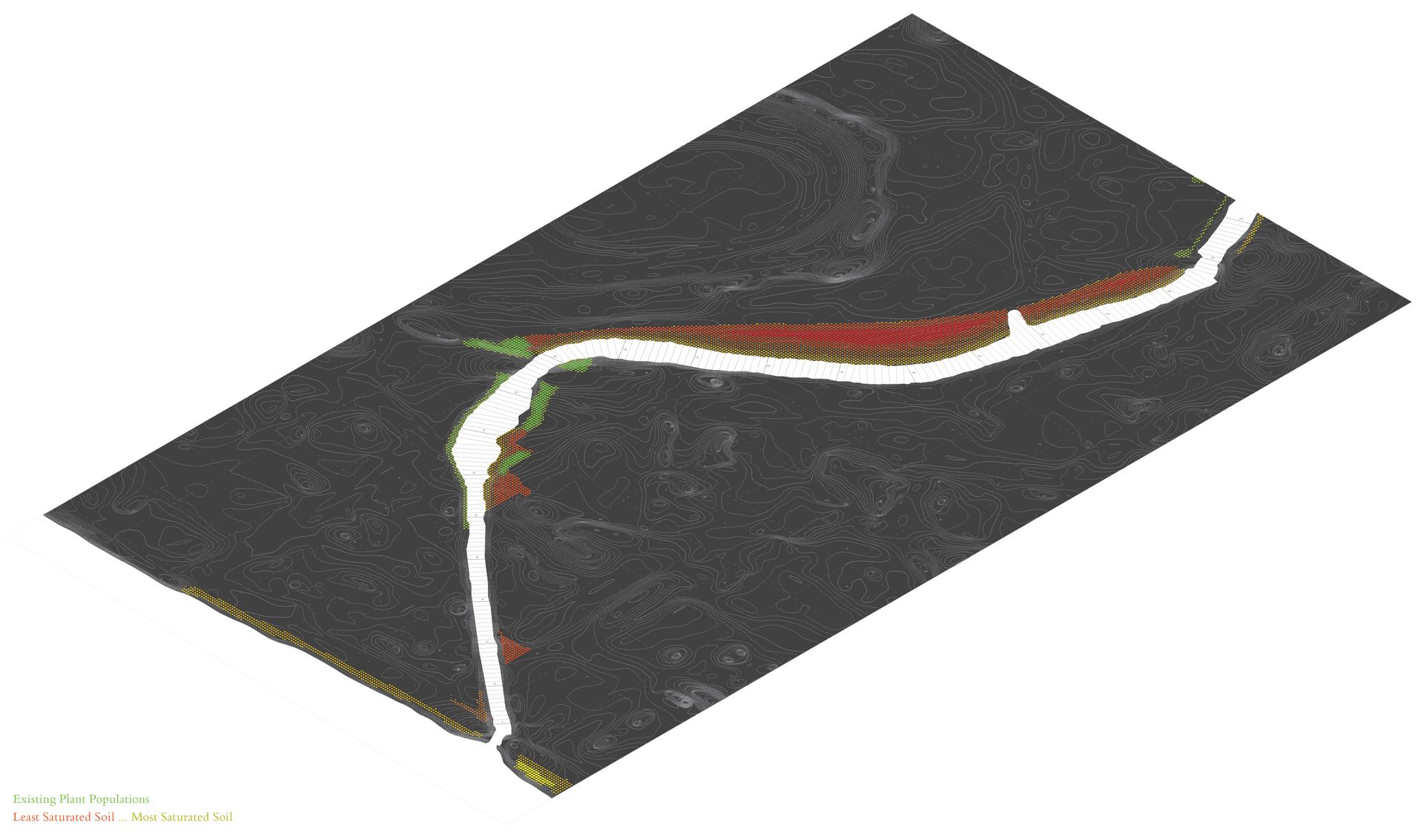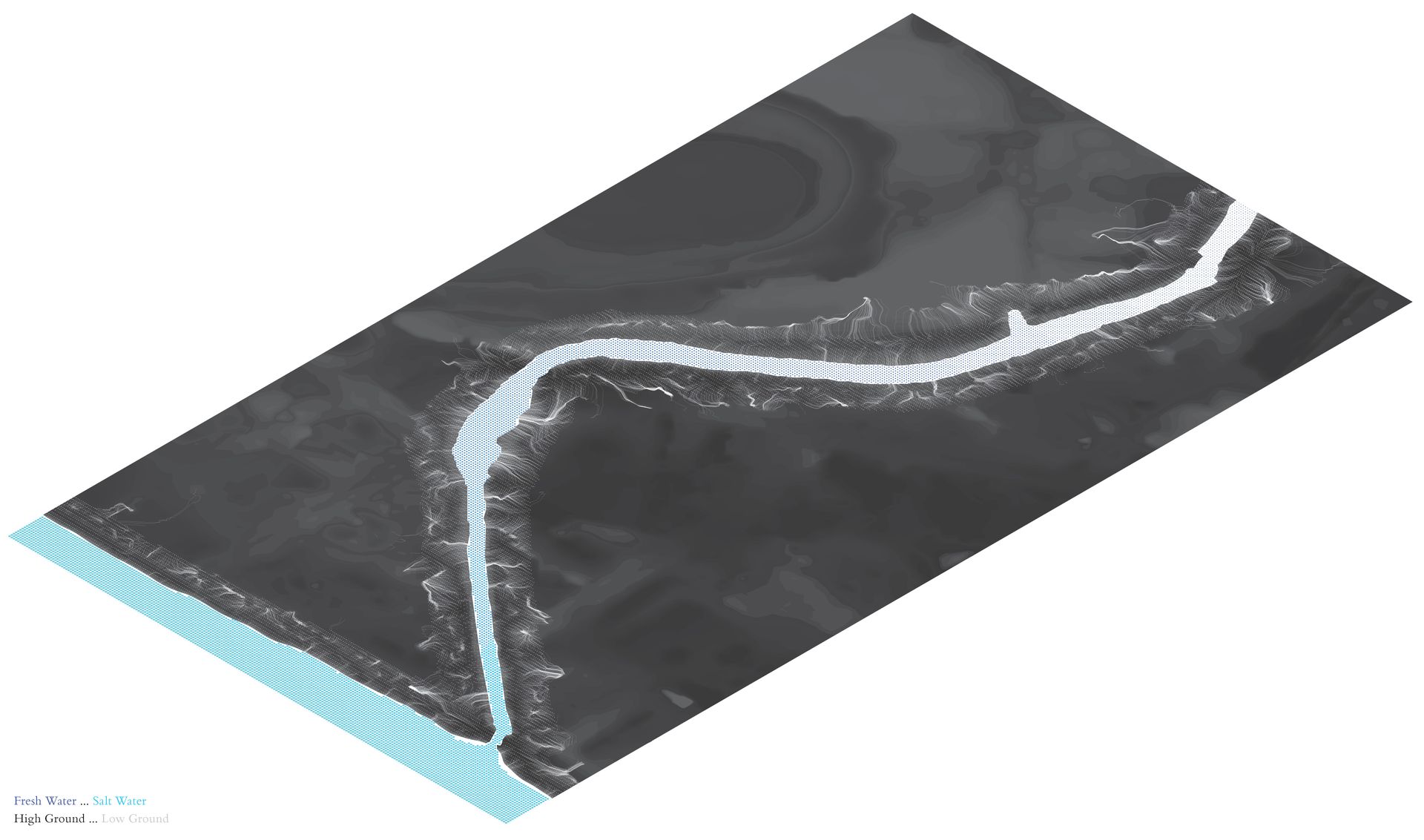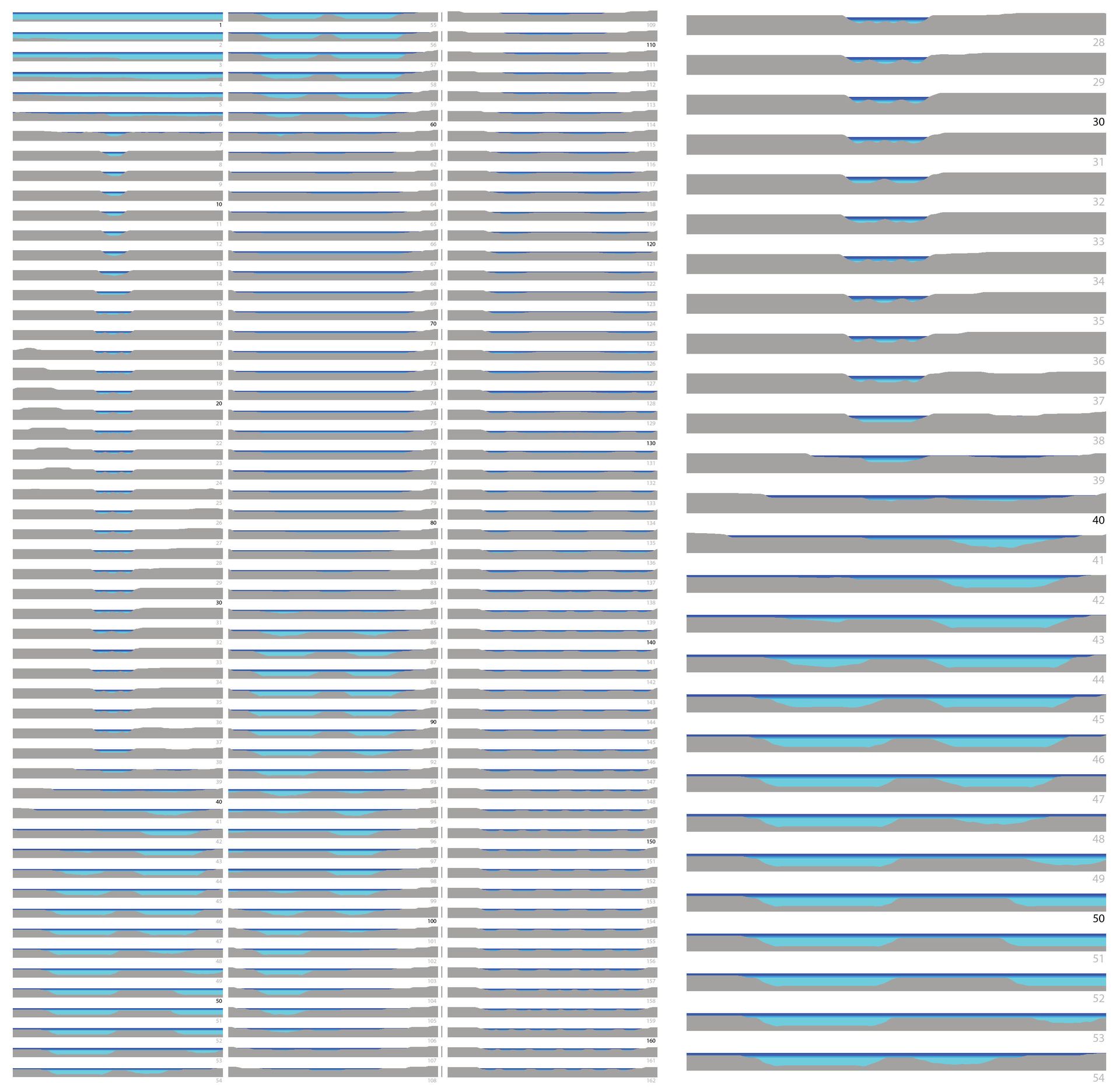I spent the final year of my Master of Landscape Architecture on a major research project under the supervision of Professor Jules Moloney and Tane Moleta. The scale and scope of the project offered a great opportunity to tie together previously—loose threads in a set of degrees that spanned across architecture, landscape architecture, philosophy, and computer science.
Abstract
The computer can be a highly efficient drafting table. It can also be much more. Architects can use programming to engage with the computer on its own terms, and in doing so gain a better understanding of complex geometric, structural, or conceptual design scenarios. This ‘computational approach’ to design is increasingly common in architecture, but comparatively rare within landscape architecture. In this thesis, I examine how and why landscape architects might employ computational design.
I start by reviewing the work of computational architects and landscape urbanists. Both emphasise diagrammatic and processual strategies as a means to confront complexity and indeterminism within the design process. However, this conceptual overlap masks a technological divergence, as computational tools are presently ill-suited to the needs of landscape architects. Their focus should be shifted away from formal exploration and towards the analysis, simulation, and generation of landscape systems. Doing so would offer landscape architects new forms of representation that would overcome some of the current limitations within their design process.
To test this proposition, I create a series of generative tools, or ‘patterns’, that use computational techniques to model ecological systems. This pattern-based approach introduces a methodology that improves the accessibility and flexibility of computational design by following the notion of a ‘design pattern’ advanced by Christopher Alexander and in software engineering. These patterns are applied in tandem with standard computational techniques to create a concept design for a post-industrial landscape. In this research, I identify computation as a powerful tool for designing landscapes as the conceptual and technical methodologies it offers enable landscape architects to better understand and explore the indeterminacy of open-ended systems. Computation offers a novel opportunity to combine conceptual openness and technical rigour when designing complex landscapes.
Featured In
Images of projects from the thesis appear in chapters of Beyond BIM (Routledge Press, 2015) and Landscape Theory in Design (Routledge Press, 2016)
Selected Images
Figure .
Figure . A script is used to analyse several areas of open space adjacent to a river. Within these areas, the slope and substrate of each particular spatial point was analysed and assigned a colour value according to the type of riparian planting it would best support.
Figure .
Figure . A script is used to analyse the salinity gradient present across an estuary. Further scripts are used to analyse the flow of surface water into the river and ocean, as well as the relative levels of flood risk.
Figure .
Figure . Diagram representing the interaction between a script generating a planting plan and the data generated from the soil and salinity analyses. In each case, a planting palette has been created, and each species' tolerances for soil saturation (top) and water salinity (bottom) are identified and placed along a spectrum. The resulting planting plan script then automatically matches the tolerances of each species to the conditions at each spatial point.
Figure .
Figure . Two scripts are combined to assess the impact of a new wetlands area upon flood risk. Using a section line that follows the river, a series of sections are automatically generated. The likely water levels that would result from flooding and tidal action are then overlaid on to each section so that effects of landform changes can be quickly assessed.




